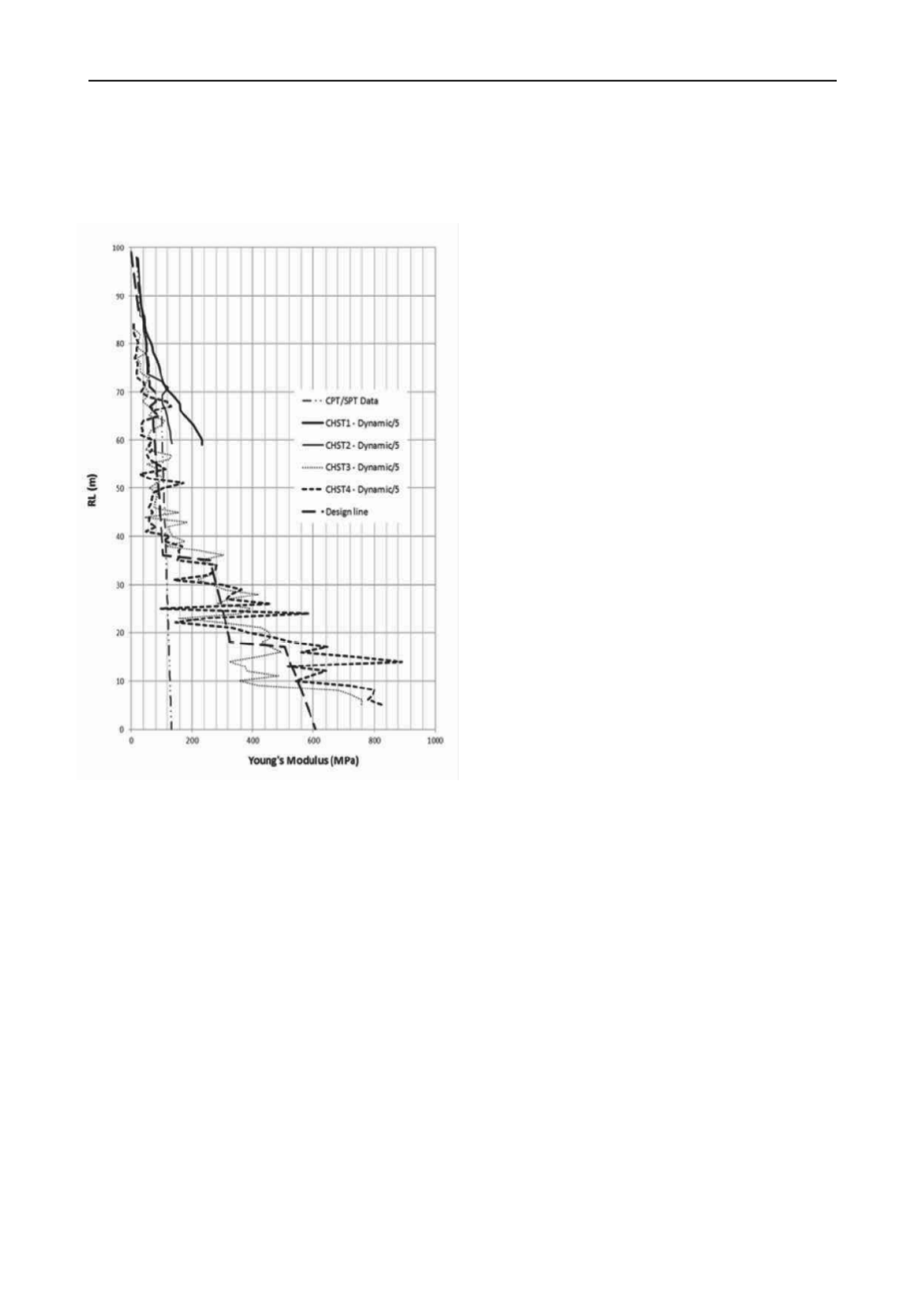
2746
Proceedings of the 18
th
International Conference on Soil Mechanics and Geotechnical Engineering, Paris 2013
of the soil below the toe of the pile was therefore made on the
basis of the unload-reload response of the pile load test. This
estimate of 250 MPa is reasonably consistent with the results
from the factored cross-hole seismic test results shown in Figure
3 at the pile toe elevation (about RL 33 m).
Figure 3 Estimates of modulus assessed from cone tests, SPTs and
cross-hole seismic tests
5 CONCLUSION
Piled rafts often form practical solutions for the support of tall
buildings on sites comprising weak rock or deep alluvial
deposits. The analysis of piled rafts in these ground conditions
requires a good understanding of the soil deformation modulus
at the appropriate strain level.
Laboratory testing on core samples often underestimates the
modulus because of stress relief and sample disturbance. In situ
testing by cone penetrometer or by the use of standard
penetration testing is often unsatisfactory or impossible in
relatively stiff materials such as those encountered at the sites
discussed in this paper.
Experience at the sites discussed shows that a careful
evaluation of the results of pressuremeter tests, cross-hole
seismic tests and instrumented pile load tests can provide a
consistent picture of deformation modulus. This consistency
provides confidence in the results of the analyses using these
values.
6 ACKNOWLEDGEMENTS
The Author gratefully acknowledges the assistance of
Nakheel, Soletanche Bachy, Intrafor Joint Venture and Fugro/
Load Test International. The author also acknowledges the
assistance of Dr Jack Morgan in preparation of this paper.
7 REFERENCES
Haberfield, C.M. and Paul, D.R. 2011. Footing Design of the Nakheel
Tower, Dubai, UAE in Workshop on soil-structure interaction and
retaining walls. Proceedings of the Technical Meeting TC207
ISSMGE, Dubrovnik, pp 35 to 52


